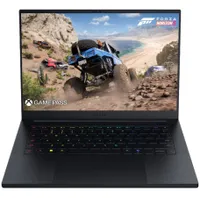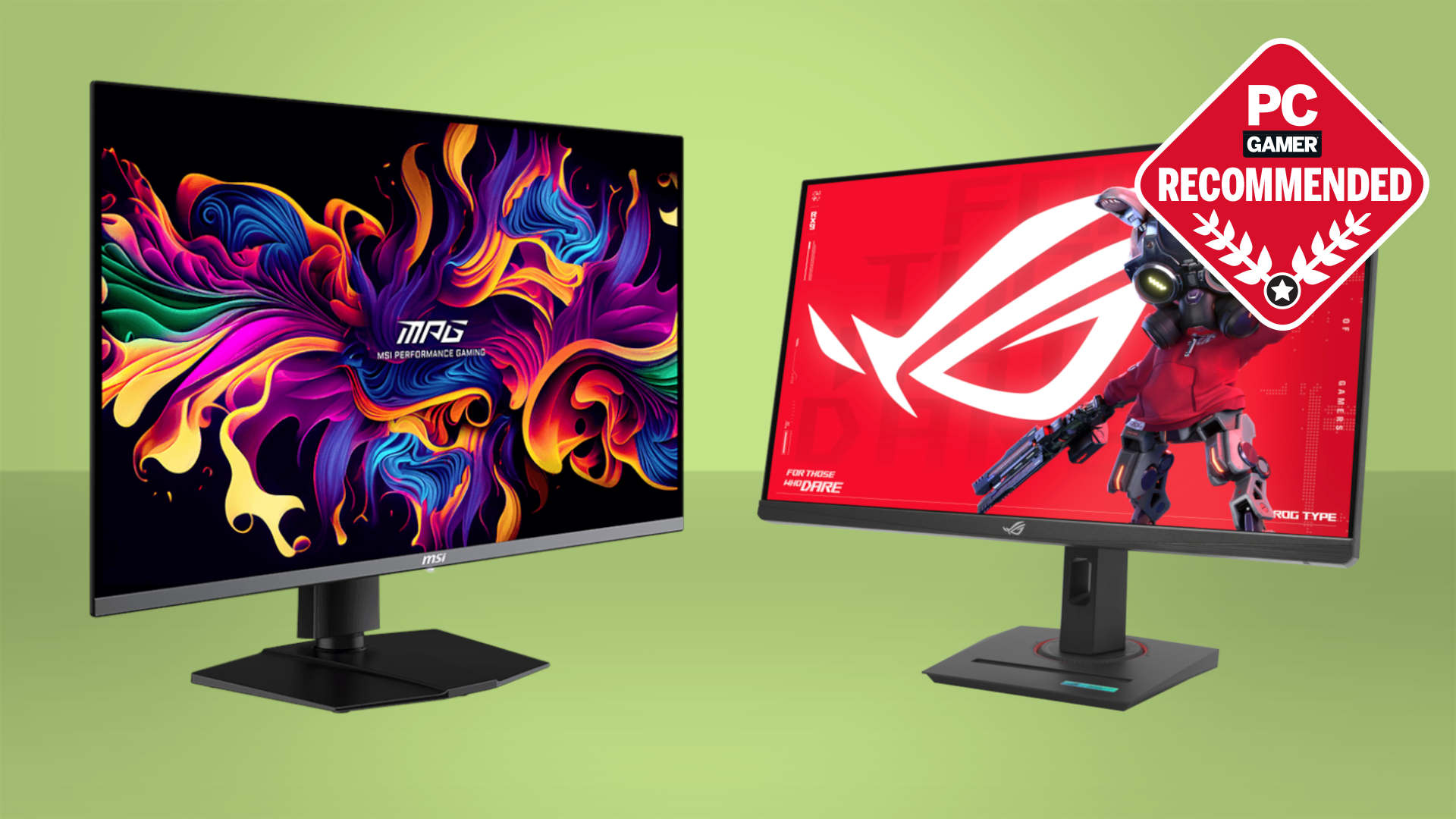I would take this Prime Day Razer gaming laptop deal over literally any other right now
With $400 knocked off the recently released Blade 14, I think this is the best gaming laptop deal around today.
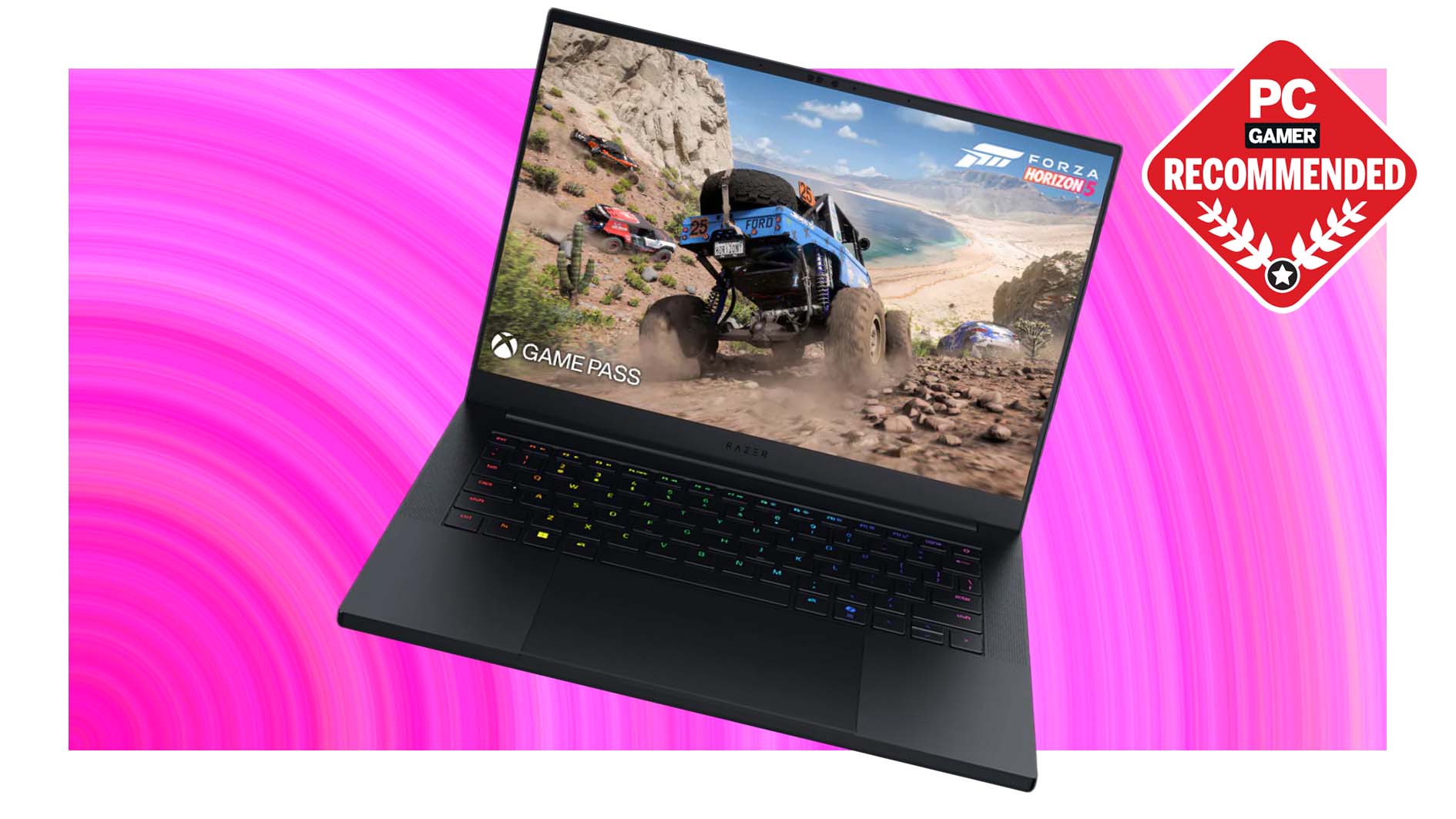
Razer Blade 14 (2025) | RTX 5070 | Ryzen AI 9 365 | 14-inch | 120 Hz OLED | 32 GB LPDDR5x-8000 | 1 TB SSD | $2,699.99 $2,299.99 at Razer (save $400)
Thank Prime Day! Well, thank Razer, anyways, because my absolute favorite Razer gaming laptop is rocking a hefty $400 discount today and the damned thing has only just been released. In my Blade 14 review I said: "a huge improvement over last year's model and there's now no other gaming laptop I'd want to have my digits on or spend my money on." And I stand by that.
Quite simply, the Razer Blade 14 is my favorite gaming laptop bar none. The 14-inch form factor is the one that makes the most sense for me in how I want my mobile gaming devices to be. Y'know, mobile. It's only really just been released and already Razer has dropped its price by $400, making it $2,300 at Razer exclusively.
Okay, I know that's still a lot of cash, and makes it pretty much the most expensive RTX 5070 laptop, but you are absolutely paying for the form factor. And if you want a truly svelte, truly mobile gaming laptop then you've got to pay for it.
👉Shop all the Prime Day deals on Amazon👈
So many gaming laptops are hulking brutes that, while they might well deliver in terms of high-end gaming frame rates, aren't the sort of thing you would want to carry around with you. And they also rarely have much in the way of either battery life or performance away from a plug socket.
Not so with the Blade 14, which matches its bigger sibling, the Blade 16 in terms of battery life, and beats every other RTX 50-series gaming laptop I've tested this year. And I've tested a lot of them. And with its Ryzen AI 9 365 APU and RTX 5070 GPU it can deliver good 1080p gaming performance whether plugged in or not, even if that modest Nvidia graphics silicon might struggle hitting the native resolution of the gorgeous 2880 x 1800 OLED screen.
Thankfully you get the twin might of DLSS 4 upscaling and Multi Frame Generation to help both boost those gaming frame rates and lighten the load on the battery, too.
It's also impressively quiet. Which is one of the main reasons why I much prefer the Blade 14 over the new Asus ROG Zephyrus G14 which I reviewed side-by-side with the new Razer machine. Don't get me wrong, both are great machines, but the experience of gaming on the Blade 14 is so much better.
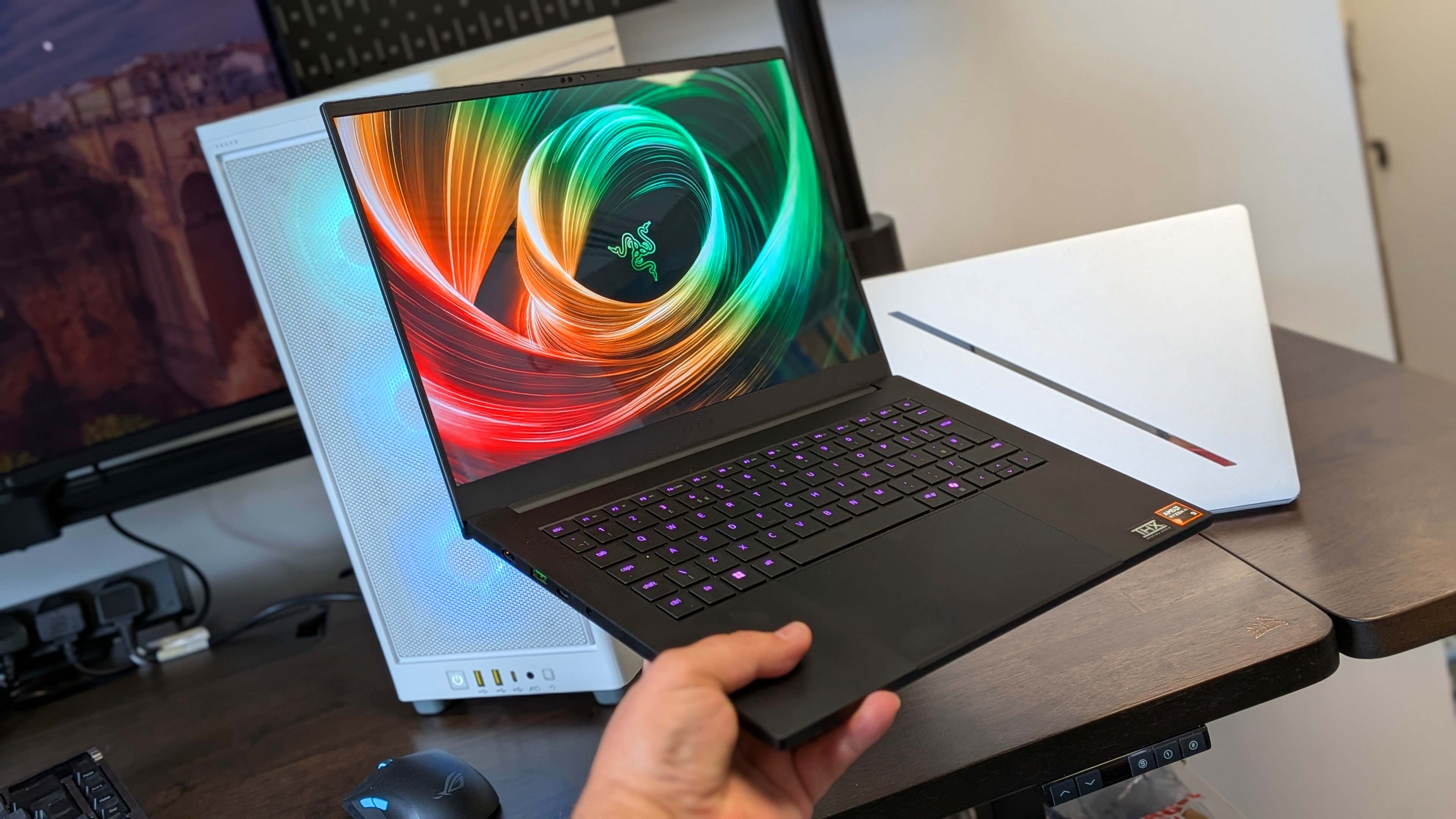
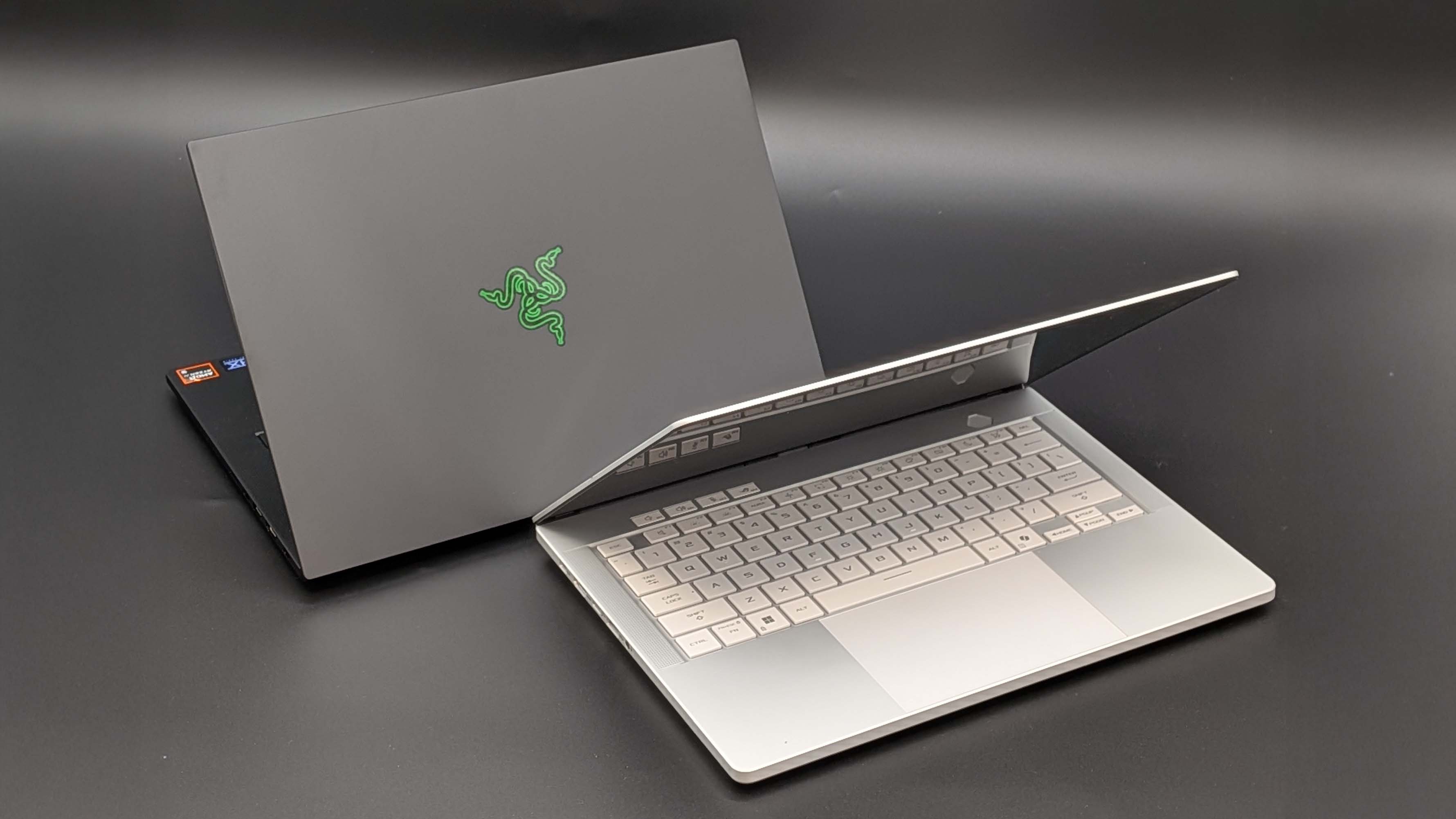
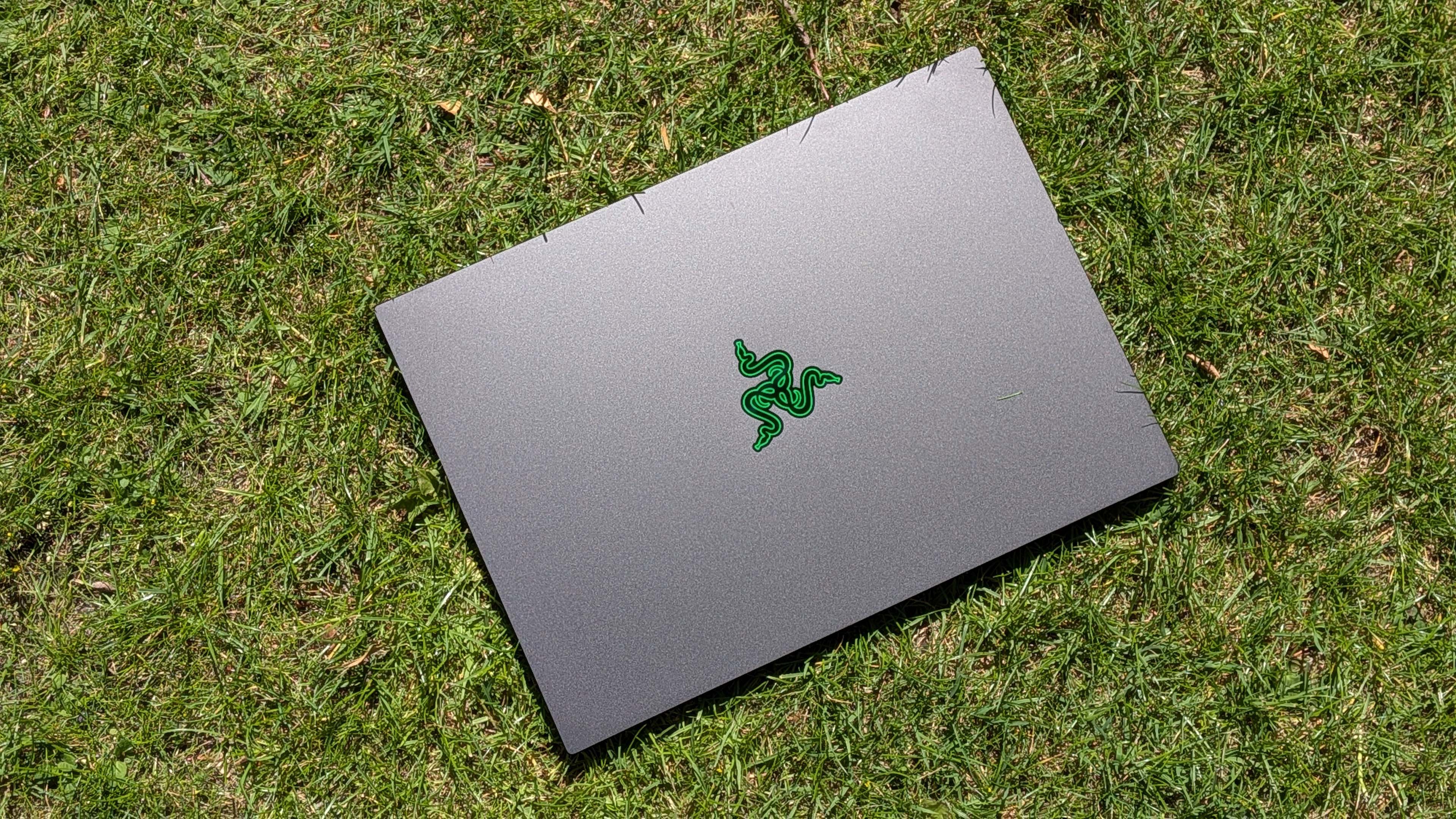
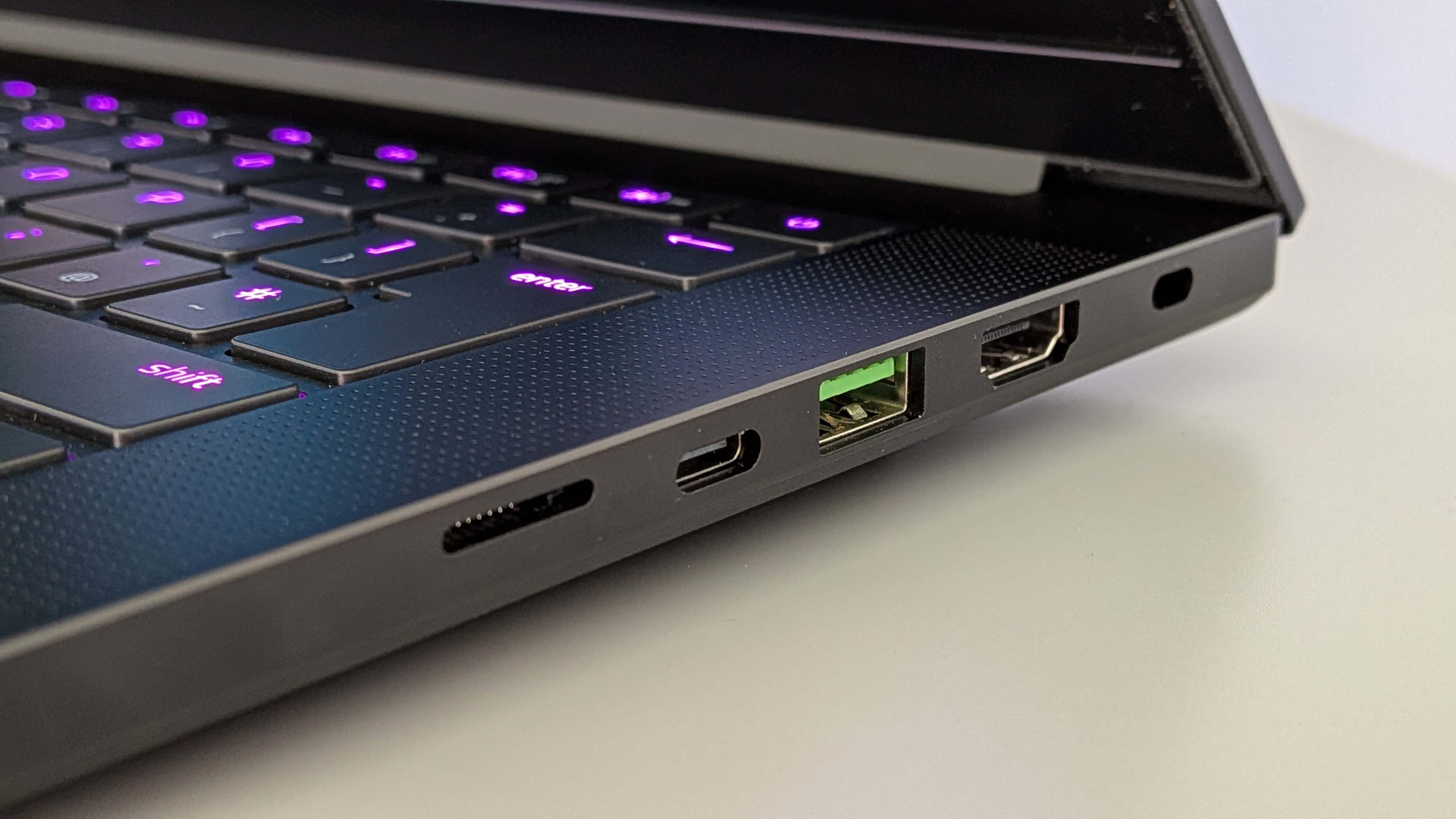
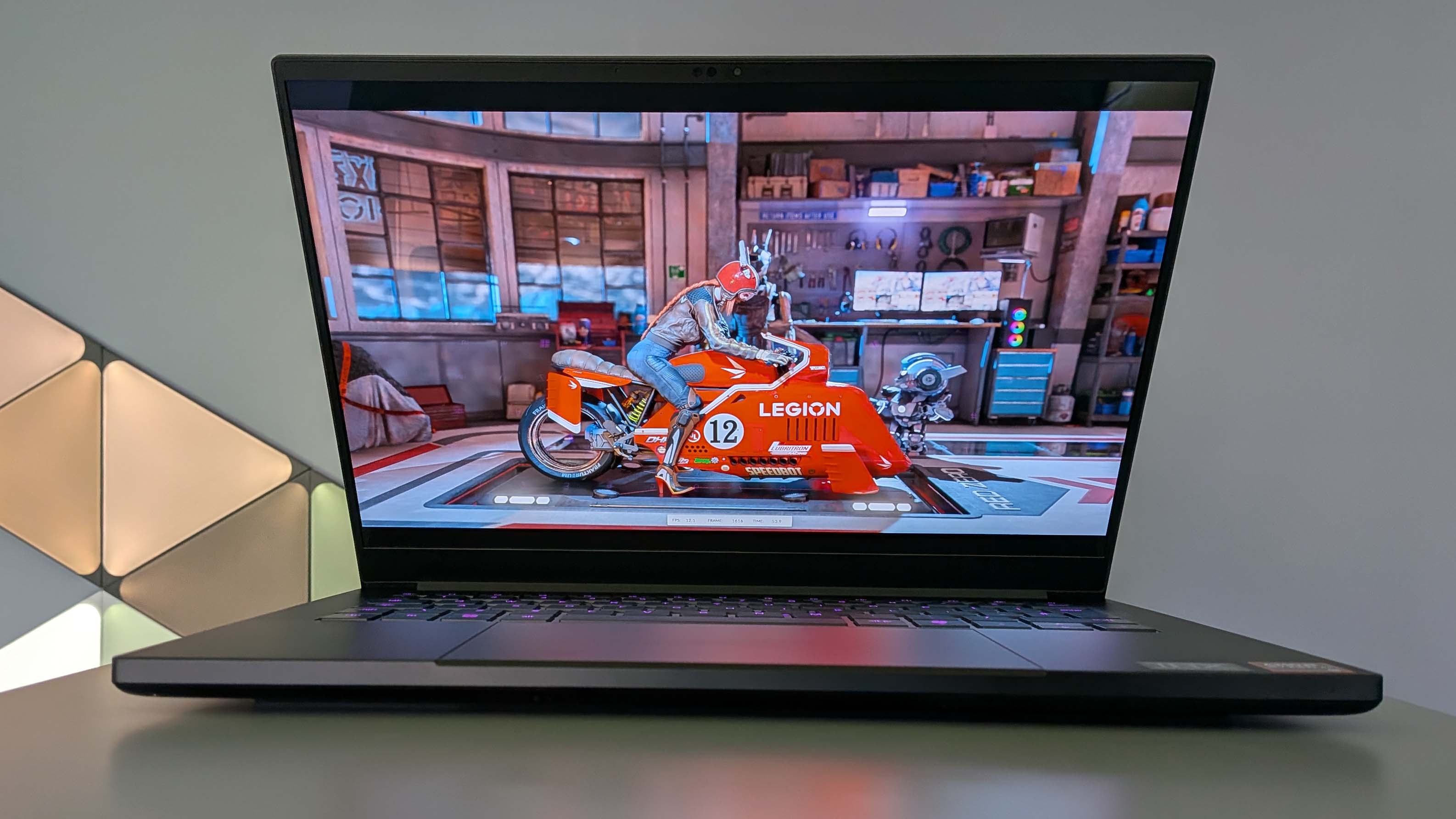
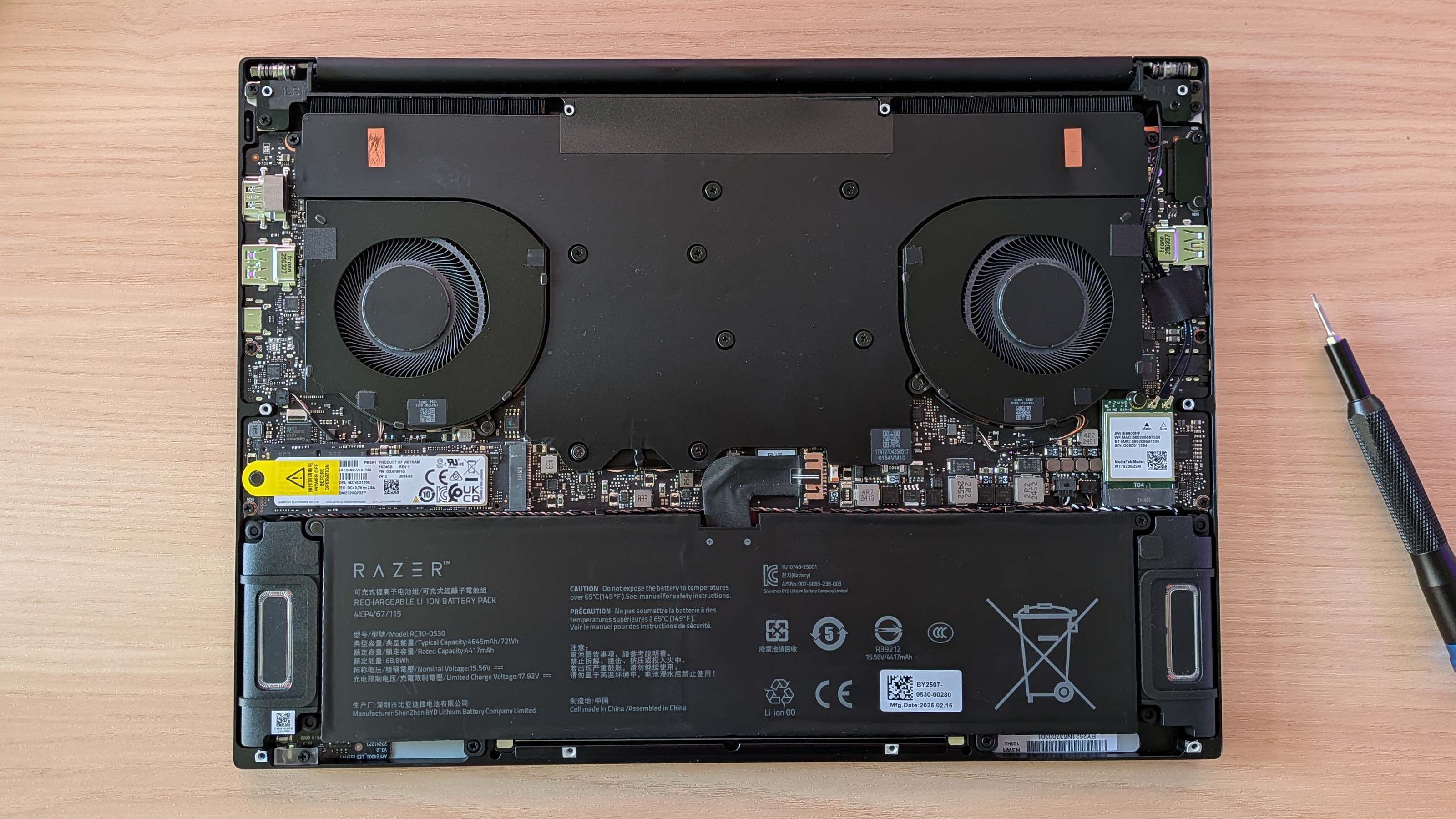
I would have preferred Razer to use the Ryzen AI 9 HX 370 chip instead of the lower-spec Ryzen AI 9 365, not because it's got a few less Zen 5c cores, but because it's integrated graphics core isn't quite as good. It's the same level as the likes of the Lenovo Legion Go S, so has decent 1080p gaming performance if you park the discrete Nvidia GPU entirely, which isn't bad, but the full-fat Strix Point APU has a far more performant iGPU.
I would have also liked the improved keyboard Razer stuck in the Blade 16, but I can appreciate that, especially for the Blade 14, getting it down as thin as possible was the pitch.
I really didn't love the last few generations of Blade 14 notebook, just because they were getting so chonky. The new chassis design, however, is delightfully slim, and I am here for it.
👉Shop all Razer's gaming laptop deals👈
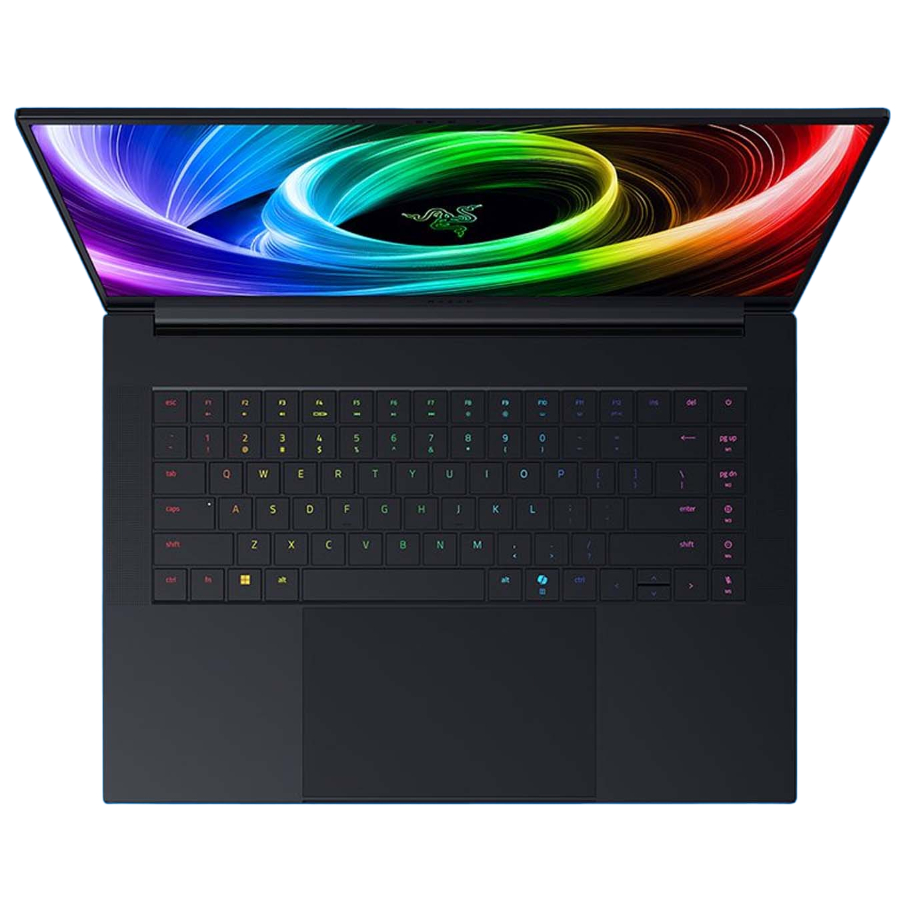
1. Best overall:
Razer Blade 16 (2025)
2. Best budget:
Gigabyte G6X
3. Best 14-inch:
Razer Blade 14 (2025)
4. Best mid-range:
MSI Vector 16 HX AI
5. Best high-performance:
Lenovo Legion Pro 7i Gen 10
6. Best 17-inch:
Gigabyte Aorus 17X
Keep up to date with the most important stories and the best deals, as picked by the PC Gamer team.

Dave has been gaming since the days of Zaxxon and Lady Bug on the Colecovision, and code books for the Commodore Vic 20 (Death Race 2000!). He built his first gaming PC at the tender age of 16, and finally finished bug-fixing the Cyrix-based system around a year later. When he dropped it out of the window. He first started writing for Official PlayStation Magazine and Xbox World many decades ago, then moved onto PC Format full-time, then PC Gamer, TechRadar, and T3 among others. Now he's back, writing about the nightmarish graphics card market, CPUs with more cores than sense, gaming laptops hotter than the sun, and SSDs more capacious than a Cybertruck.
You must confirm your public display name before commenting
Please logout and then login again, you will then be prompted to enter your display name.
